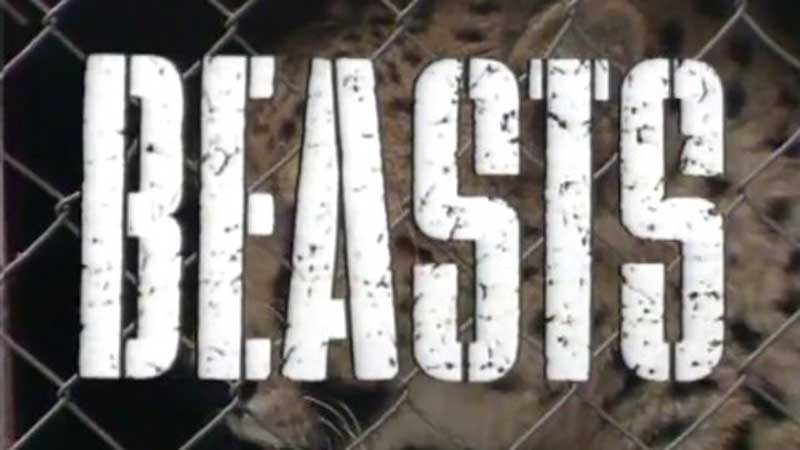CHRIS NEWTON continues his series on Nigel Kneale’s classic horror series, Beasts with What Big Eyes…

Review of What Big Eyes
Continuing the series’ savage theme, the fifth episode of Nigel Kneale’s Beasts, What Big Eyes, opens with the feral snarling of a caged leopard as Bob Curry, (Michael Kitchen), a young RSPCA inspector, investigates the transfer of wolves.
Kitchen gives a very believable portrayal of an idealistic young man struggling to be taken seriously, captured brilliantly in his first encounter with the dodgy Duggie Jebb (Bill Dean).
“Don’t you talk to me, I was an animal trader when you couldn’t spell C-A-T!” Jebb scoffs.
Curry’s investigation leads him to a seemingly ordinary pet shop, where the shopkeeper’s aged father, Leo Raymount, is vivisecting wolves as part of his lifelong scientific study of lycanthropy.
What Big Eyes is a slow burning episode, with a payoff that doesn’t quite deliver, but it manages to be nothing short of captivating throughout, largely due to the terrifyingly intense Patrick Magee in his role as Leo, whose facial features alone are enough to suggest madness, and that’s even before he starts howling.
Magee will be familiar to Amicus fans in his equally unnerving roles as Dr Rutherford in 1972’s Asylum, and George in 1973’s Tales from The Crypt, in which he plays a mistreated patient in a home for the blind who exacts a brutal revenge upon the home’s militant director.
Leo insists that wolves are humanity’s genetic ancestors, going so far as to suggest that the beast in Little Red Riding Hood is not merely a wolf in an old woman’s clothing, but that the grandmother actually became the wolf.
There’s something genuinely unsettling about the restraints in his vivisection lab, and the notion of a mad old scientist injecting himself with lupine DNA in the hope of triggering a transformation.
The classic teleplays of the ‘70s and ‘80s are a far cry from modern TV, but what they lack in terms of budget they usually make up for with their imaginative and dramatic performances, of which this is a great example.
But that’s not to say they’re without flaws. Sometimes these plays come across as just that – plays – with the actors seeming like they’re acting to fill a stage and be seen all the way from the back row, which, when seen on the small screen, does start to border on the hammy.
These slightly odd Shakespearian-B-Movie performances are very unique to this period of TV history and have been lovingly parodied by the likes of Garth Marenghi’s Darkplace and Inside No. 9.
Yet as much as they’re poking fun, there is an equal amount of homage. There’s a reason these series are so memorable. Without relying on multiple sets and extensive effects,
Kneale creates very believable characters and puts them in truly horrific situations. Credit must also go to Madge Ryan, whose performance as Leo’s long-suffering daughter Florence adds an empathy which only serves to fuel the overall nastiness.
She believes her father is a genius, with her place in the world being to serve him, and her breakdown at the episode’s climax is brilliantly acted as she tears up her father’s papers and smashes his lab yelling “Rubbish! All of it mad rubbish!”
Whilst Magee makes the episode, it’s sad to say that he also spoils it slightly. Following his character’s death, he can clearly be seen breathing for a good five minutes.
It’s so conspicuous that I initially assumed it was deliberate and was expecting him get up at any second.
What Big Eyes may not be perfect, but it’s weirdly wonderful and the effects of its twisted influence on the minds of its young audience can be seen in some of the best television around today.
Tell us what you thought of What Big Eyes in the comments section below!
Read more Beasts episode reviews on Spooky Isles here.
You can buy Beasts, the complete series on DVD, from Amazon.



I remember noticing him breathing, and wondering if it was a deliberate touch to make it appear he was about to return from the dead as a wolf!